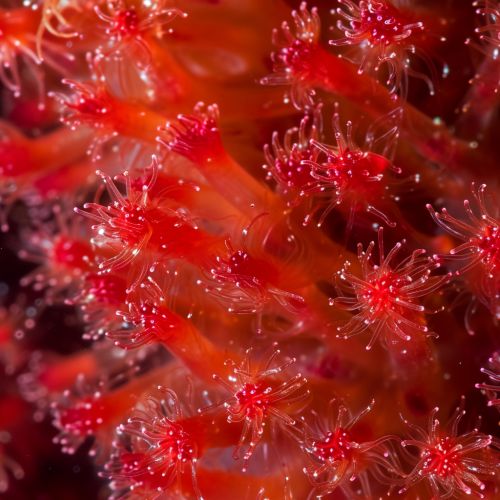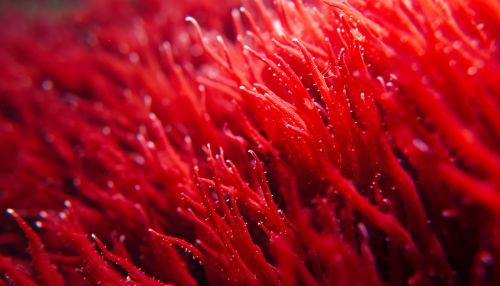Rhodophyta
Introduction
Rhodophyta, also known as red algae, is a large group of predominantly marine algae that includes over 7,000 recognized species. They are characterized by their red color, which is a result of the pigment phycoerythrin that masks the green color of chlorophyll. Rhodophyta are an important part of the marine ecosystem, contributing significantly to primary production and providing habitat for a variety of marine organisms.
Classification
Rhodophyta are classified into three classes: Florideophyceae, Bangiophyceae, and Cyanidiophyceae. These classes are distinguished by their reproductive structures and the organization of their chloroplasts.
Florideophyceae
Florideophyceae is the largest class of Rhodophyta, comprising over 6,000 species. Species in this class are characterized by their complex life cycles, which involve alternation between three generations: the gametophyte, carposporophyte, and tetrasporophyte.
Bangiophyceae
Bangiophyceae is a smaller class, with about 1,000 recognized species. These species typically have simpler life cycles than Florideophyceae, with alternation between only two generations: the gametophyte and sporophyte.
Cyanidiophyceae
Cyanidiophyceae is the smallest class of Rhodophyta, with only a few dozen recognized species. These species are unique in their ability to survive in extreme environments, such as hot springs and acidic waters.
Morphology
The morphology of Rhodophyta varies widely, from microscopic unicellular forms to complex multicellular structures. The cells of Rhodophyta are typically organized into filaments, sheets, or three-dimensional pseudoparenchymatous structures.
Cell Structure
The cells of Rhodophyta are eukaryotic and contain a number of unique features. The chloroplasts are surrounded by two membranes and contain unstacked thylakoids. The cell walls are composed of cellulose and a variety of polysaccharides, including agar and carrageenan.
Pigmentation
The red color of Rhodophyta is due to the presence of the pigment phycoerythrin, which absorbs blue light and reflects red light. This allows Rhodophyta to photosynthesize at greater depths than other types of algae.
Reproduction
Rhodophyta reproduce both sexually and asexually. The sexual reproduction involves a complex life cycle with alternation of generations. The asexual reproduction involves the production of spores, which are released into the environment and develop into new individuals.
Ecology
Rhodophyta are predominantly marine, but some species are found in freshwater environments. They play a crucial role in the marine ecosystem, contributing to primary production and providing habitat for a variety of marine organisms.
Economic Importance
Rhodophyta are economically important for a variety of reasons. Some species are harvested for food, particularly in East Asia. The cell walls of Rhodophyta are a source of agar and carrageenan, which are used in the food industry as thickeners and stabilizers. In addition, Rhodophyta are used in the aquarium trade for their aesthetic appeal.
See Also


